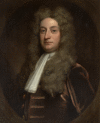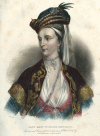The prevention and eradication of smallpox: a commentary on Sloane (1755) 'An account of inoculation'
- PMID: 25750241
- PMCID: PMC4360126
- DOI: 10.1098/rstb.2014.0378
The prevention and eradication of smallpox: a commentary on Sloane (1755) 'An account of inoculation'
Abstract
Sir Hans Sloane's account of inoculation as a means to protect against smallpox followed several earlier articles published in Philosophical Transactions on this procedure. Inoculation (also called 'variolation') involved the introduction of small amounts of infectious material from smallpox vesicles into the skin of healthy subjects, with the goal of inducing mild symptoms that would result in protection against the more severe naturally acquired disease. It began to be practised in England in 1721 thanks to the efforts of Lady Mary Wortley Montagu who influenced Sloane to promote its use, including the inoculation of the royal family's children. When Edward Jenner's inoculation with the cow pox ('vaccination') followed 75 years later as a safer yet equally effective procedure, the scene was set for the eventual control of smallpox epidemics culminating in the worldwide eradication of smallpox in 1977, officially proclaimed by WHO in 1980. Here, we discuss the significance of variolation and vaccination with respect to scientific, public health and ethical controversies concerning these 'weapons of mass protection'. This commentary was written to celebrate the 350th anniversary of the journal Philosophical Transactions of the Royal Society.
Keywords: inoculation; smallpox; vaccination; variolation.
Figures




References
-
- Sloane H, Birch T. 1755. An account of inoculation by Sir Hans Sloane, Bart. Given to Mr. Ranby, to be published Anno 1736. Communicated by Thomas Birch, D. D. Secret. R. S. Phil. Trans. R. Soc. 49, 516–520. ( 10.1098/rstl.1755.0073) - DOI
-
- John Brooks J. 1954. Sir Hans Sloane, the great collector and his circle, p. 234 London, UK: The Batchworth Press.
-
- Grundy I. (ed.). 1997. Lady Mary Wortley Montagu: selected letters. London, UK: Penguin Classics.
-
- Newman H. 1722. The way of proceeding in the small pox inoculated in New England. Communicated by Henry Newman, Esq; Of the Middle Temple. Phil. Trans 32, 33–35. ( 10.1098/rstl.1722.0007) - DOI
Publication types
MeSH terms
Grants and funding
LinkOut - more resources
Full Text Sources
Other Literature Sources
Medical
